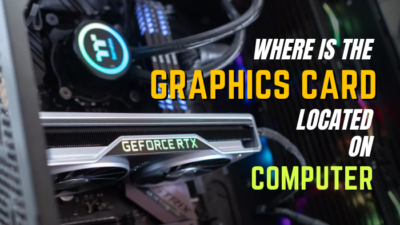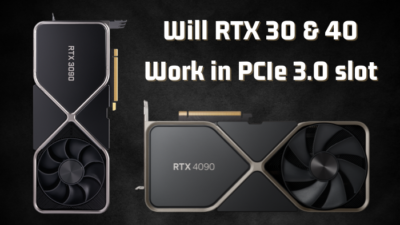Integrated or dedicated GPUs! Are these two types of graphics processing units confusing you so much?
Integrated GPU is enough when gaming isn’t your primary concern. But a dedicated GPU is like a basic need if you’re a heavy gamer. However, don’t get confused about these graphics while buying a new PC!
Because I will clarify the core differences between these two GPU segments in this article. Just read until you reach the finish line. So, let’s get in!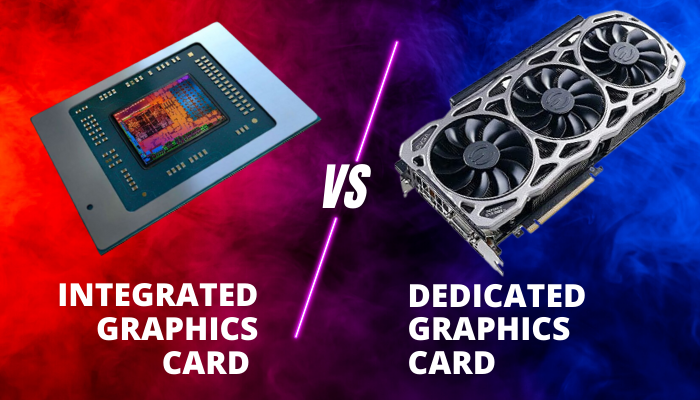
What is an Integrated Graphics?
The Integrated GPU shares the CPU’s same silicon die as it’s integrated within the CPU. This graphic is also known as iGPU, and it’s not powerful because of its power efficiency. That’s why you can use it for daily tasks like web browsing, watching videos, office-related work, etc.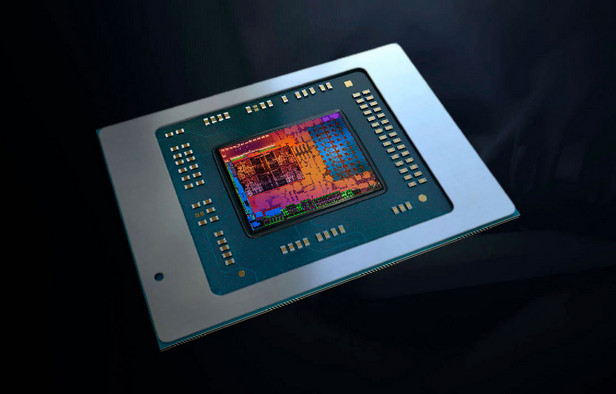
Onboard GPUs don’t have their own VRAM and processor to handle heavy workloads. It uses the system’s 1% to 3% RAM and CPU processing power.
Intel and AMD offer processors with iGPU on them. You’ll see Intel UHD Graphics in Intel processors, but for AMD CPUs, you’ll see AMD Vega Graphics. However, AMD named their integrated graphics-based processors APU. Though the naming might sound terrible, it is a bang for the buck.
The processor with integrated graphics can handle both CPU and GPU-based work.
What is a Dedicated Graphics Card?
A dedicated GPU is absolutely separate from the CPU. It has its own processor for rendering graphics and VRAM. As a result, this GPU doesn’t depend on the CPU’s processing power and share RAM. It’s not power efficient like the iGPU, and these are expensive too.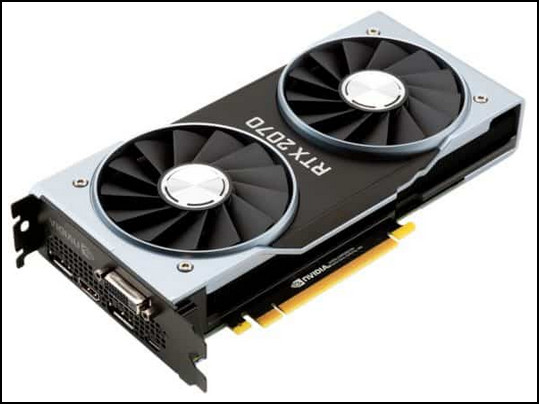
You’ll find dedicated GPUs, mostly on laptops and desktops. A dedicated GPU helps to free the CPU from processing more GPU-centric data. That’s why you won’t face frame drops if you’re playing high graphics demanding AAA-titled games.
With the dedicated GPU, you can edit videos, make animations, render 3D models, and so on. In laptops, dedicated GPUs get soldered in the motherboards PCB, and there is no option to upgrade. But this scenario is reversed for the desktop graphics card.
There is a PCIe slot for installing desktop-grade GPUs in the motherboards. Moreover, you can upgrade the card anytime to get better performance.
Follow our guide to fix Nvidia Graphics Card not detected in Windows 10.
Differences Between Integrated vs Dedicated GPU
The main distinction between integrated and dedicated GPU is the performance. The dedicated one is more powerful and consumes more power than the integrated one. Additionally, discrete GPUs have their own processor and VRAM to render graphics faster, but integrated graphics lacks this.
Due to having its own processor and VRAM to render graphics, the dGPUs are faster and more powerful. Contrarily, the iGPUs use CPUs processing power to perform graphical calculations and use the system’s RAM as its own.
The CPU shares only slight processing power with the GPU because the main purpose of the CPU is to process logical calculations. For that, the iGPUs are weak and can’t handle heavy graphics data. And the same thing goes for the RAM segment too.
If you have installed only 4 GB of RAM, the integrated graphics only use 1 GB from the RAM as shared GPU memory. And you’ll find this tiny amount of shared VRAM useless if you’re a heavy gamer. Now, let’s look at the differences between these graphics in a table.
Here are the main differences between integrated and dedicated graphics in a table:
| Features | Integrated Graphics | Dedicated Graphics |
|---|---|---|
| Price | Not that expensive. It comes bundled with the processor. | Dedicated graphics cards' price is high because it has their own processing chip and VRAM. |
| Performance | Delivers entry-level performance, and iGPUs processing power is weak. | Can render high-level graphics. These GPU cards are suitable for heavy gaming & high graphics intense programs. |
| Processor & VRAM | Don’t have a separate graphics processing unit and VRAM. Use the CPUs processing power & system RAM. | The Dedicated GPU has its own graphics processing chip and VRAM. |
| Power Consumption | iGPUs don’t draw much power. | dGPUs draw more power than iGPUs because power consumption depends on the card's graphics processing capability. |
| Cooling | Produces less heat because it doesn’t draw that much power. | It heats up a lot and rapidly. That’s why an additional cooler is required to cool it down. |
| Customization | You can’t customize anything on these graphics. | You can customize or modify this card by increasing the fan speed and overclocking the performance. |
| Upgradability | It’s impossible to upgrade iGPUs because it’s part of the CPU. | You can upgrade the dedicated card at any time. |
Intel & AMD both have integrated graphics on their processor. For example, the Intel Core i7-13700 has Intel UHD 770 iGPU, and AMD Ryzen 7 7800X3D has Radeon Graphics on it, which is RDNA2 architecture based.
But not all CPUs have integrated graphics on them. So, before buying one, ensure your CPU has iGPU in it by checking the model name. The Intel processor’s model names with “F” in the last don’t have integrated graphics. But all Ryzen mobile APUs have iGPUs in them.
And make sure to go for Ryzen desktop APUs with a “G” in the last of the model name for integrated graphics.
Since you’re looking for dedicated GPUs for your laptop, you can go for Nvidia’s GeForce 930 MX, GTX 1650 Ti, RTX 3050, AMD’s Radeon RX 7600M, RX 6850M XT, and so on. These are powerful dedicated graphics by Intel & AMD for laptop platforms.
iGPU vs dGPU Which is better?
Discrete graphics is crucial If your priority is gaming, 3D modeling, or GPU-intensive work. Conversely, iGPUs are enough when you’re not a gamer and only do regular tasks like browsing, MS Office-related works, watching movies, listening to songs, etc.
You can do decent gaming with the integrated GPUs, but for playing AAA-titled games, there is no alternative to the dedicated graphics card.
So, which graphics option is the best?
My super-tech sense suggests you should go for the dedicated GPU, at least for the entry-level one. Which won’t dry your wallet greatly, and still give you enough room to do all sorts of things.
So, in the end, the winner of this graphics battle is Mr. Dedicated! But still, there are things to consider before giving the winner tag to the dGPU. Let me get that to you now.
Check out our separate post on how to Benchmark your Graphics Card?
Who Needs a Dedicated Graphics Card?
You must consider two factors to understand who exactly needs discrete graphics. The facts are using scenario and budget. Firstly, a hardcore gamer and a professional graphics designer, 3D modeler & video renderer can’t do these tasks without a dedicated graphics card.
The budget part comes as the second factor. Those who don’t worry about the wallet to buy a gaming rig can buy a top-tier-level graphics card. So, dedicated graphics cards are like the basic needs of gamers and professionals.
Below are the main consumers who need dedicated graphics:
1. Heavy Gamer Who Needs a Desktop Under Decent Budget
If gaming is like a pacemaker that keeps you alive, you must go for a discrete graphics card. Hardcore gamers play mostly play AAA-titled games and stream a lot. For them, getting a high-end GPU is like injecting more adrenaline.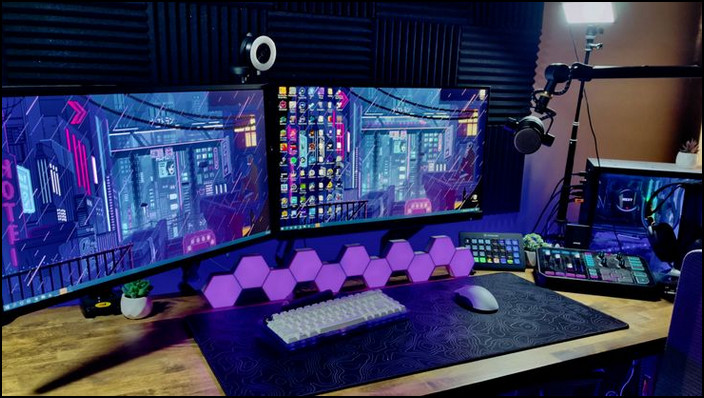
If you’re one of this kind and budget is not a matter of concern for you, go for a dGPU. Just spend $700 or above to buy a decent gaming rig that will play all 1080p games. However, you can also spend around $1000-$2000 when your wallet is over-flooded with cash.
2. Gamer Who Needs a Gaming Laptop in Mid-budget
Gaming laptops are expensive, and those can fulfill your daily gaming needs. A gaming laptop with the same specs as a desktop will cost more. But with the extra amount of money, you’ll get portability. With a moderate budget, you can still buy a gaming laptop.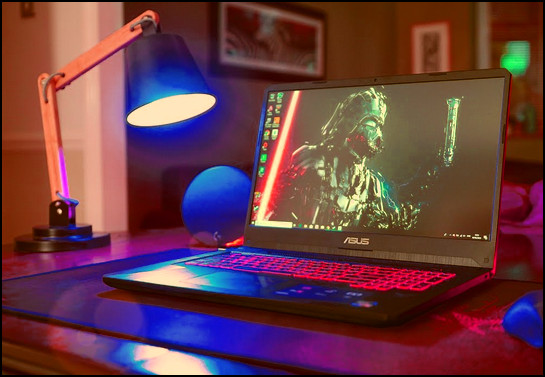
You’ll find a laptop with a dedicated GPU to play mid-level games for just under $700. Or else, you can spend at least $1000 to get a laptop that can handle most games without any issues.
Not only gamers but also graphics work-related professionals use graphics cards. They require a dedicated GPU because graphics works cry for a powerful GPU that can render graphics faster with more VRAM.
Animation makers, 3D modelers, or video renderers require powerful cards to accomplish their work more quickly. A powerful GPU card also requires a powerful CPU with at least 16 GB or 32 GB of RAM.
Who Needs Integrated Graphics Only?
Integrated graphics are for those persons who only need a PC for daily basic computer tasks like browsing the net, sending mail, working with MS Offices apps, listening to music, and watching videos.
CPU makers are more focused on making their processors more powerful and power efficient at the same time. Along with the clock speed, the integrated graphics also provide a top-notch performance.
So, the latest generation CPUs offer iGPUs in the same silicon die that can play moderate games. Now, let me show you who should go for integrated graphics only.
Here are use case scenarios that only require iGPU:
1. Non-Gamers Who are Mainly Focused on Basic Computer Tasks
Businessman and office persons are the type of people who only want a PC for basic computing tasks. They only need MS Office applications, a browser for surfing the net, and apps for listening to music and watching videos.
Integrated graphics can handle these sorts of tasks without any issues. However, modern iGPUs are powerful enough to handle video editing. So, if you are that person, you shouldn’t need a dedicated GPU, iGPU is more than enough for you.
2. Gamers Who Need a Desktop Within a Low Budget
If you’re a gamer who needs a desktop to play mid-level games without spending much, you can rely on integrated graphics. As I stated earlier, modern CPUs do come with powerful iGPU. With this, you can play any mid-level games even though you should need at least 8 GB or 16 GB RAM.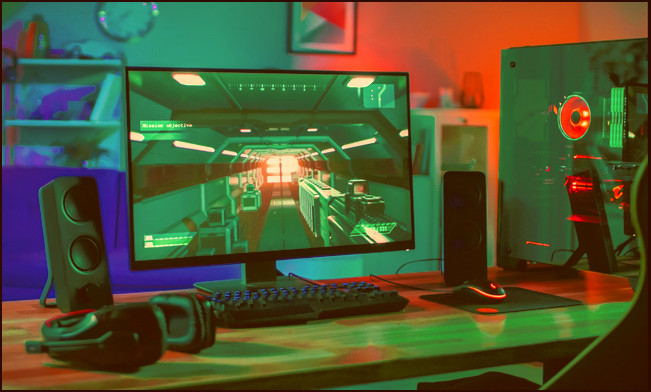
Because integrated GPUs share the system RAM to work as a shared GPU memory. That means more RAM will make the iGPU more powerful. With the $250-$400 budget, it’s possible to build an entry-level gaming rig.
With this, you can play Rocket League, Dota 2, Fortnite, Call of Duty, League of Legends, etc. For a better gameplay experience, you must lower the game settings.
3. Mid-Level Gamers Who Need a Laptop Under Tight Budget
Gaming is tough on a laptop without a dedicated GPU. That’s because laptop CPUs aren’t as powerful as desktop ones if both are the same model. iGPUs mostly relied on CPU power.
Since you desperately want a laptop for gaming and the budget is limited, go for latest gen CPU-based laptop. I suggest you go for AMD 6000 series APU or Intel 13th Gen CPU-based laptop.
AMD’s 6000 series RX 680M iGPU is a beast among all. But to get one, you must spend a little more.
I bet I have cleared up your confusion about choosing the right graphics card by giving all the scenarios. So, if you’re a mad gamer, go for the dedicated one, and pick the integrated GPU if you’re a workaholic. But select the right CPU and GPU wisely.
FAQs
Can I combine both iGPU and dedicated GPU for better performance?
No can’t combine both of these GPUs to boost graphics performance. However, if you managed to do that, the iGPU can keep up with the dGPU.
Which one provides better gaming performance integrated or discrete graphics?
Discrete or dedicated graphics will deliver top-class performance than the integrated ones. You can play AAA-titled games with high settings with a dedicated GPU, which is impossible with an iGPU.
But you can play some mid-level games with iGPU by lowering gameplay settings.
What is the benefit of dedicated graphics over the integrated GPU?
Integrated graphics don’t have any separate graphics processing unit and VRAM. But dedicated GPUs consist of a powerful graphics rendering processor and VRAM. Plus, dedicated GPUs have their own cooling system to cool down the processor.
Final Thoughts
Graphics Processing Unit, or short GPU, is the perfect comrade of the PC system battalion that solely handles all the graphics processing operations. It stands still and fights against all sorts of rendering missions.
That’s why integrated and dedicated graphics are essential, but each has its own working capability. The main goal of this article is to let you know the in-depth comparison of these graphics. And I believe I have given all to clear up things regarding iGPU vs. dedicated GPU.
Feel free to knock for more info. See you at the next one. Till then, let the GPU bring a smile to your face!

